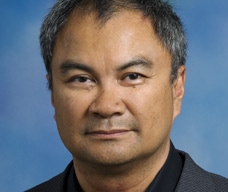Doctor Carlito Lebrilla
The Perfect FoodAgilent helps researchers uncover the secrets of mother`s milkResearchers in California are delving deeply into what may seem like a very simple question: What makes a mother's milk so beneficial to her child? "Our ultimate goal is to use milk as a model for the perfect food," says Carlito Lebrilla, a professor of analytical chemistry at the University of California in Davis. Nutrition is only part of the story. "Some of the components of milk are certainly food for the infant," Lebrilla says, "but many of the components are there to establish the baby's gut microbiota—feeding good bacteria, blocking bad bacteria, and essentially training the immune system so it doesn't over-react."
Lebrilla and his team are using Agilent technology to analyze the components of human milk and gain a better understanding of their various functions. They believe their research may have far-reaching benefits—especially for children growing up in parts of the world where hygiene is poor.
"We're collaborating with people around the world who collect samples for us in communities in Bangladesh, Gambia, Peru, and so on," Lebrilla says. "We're part of a major effort with the National Institutes of Health and the Bill and Melinda Gates Foundation." Children in areas where hygiene is poor often develop environmental entheropathy, which stunts their growth and leaves them emaciated. "So we have milk from the mothers of these kids," Lebrilla says. "We're working to identify what it is about the normally growing kids and their mothers' milk that seems to protect them even beyond breastfeeding." When the team started its research in 2005, very little was known about glycosylation—the process in which glycans attach to proteins to create a variety of important compounds—and few tools were available.
"One of the more critical challenges was how do we separate these compounds? From a chemical point of view, they look the same, but from a biological point of view, they couldn't be more different. So we started working with Agilent to look specifically at these structures," Lebrilla says.
"Agilent developed some custom chips for us that we now use and the company has commercialized. These chips allow us to separate these compounds very effectively, particularly when used with one of the company's time-of-flight or quadrupole time-of-flight mass spectrometers. Now, if we see a structure in milk, we can track it in blood, in urine, in feces, and quantitate it. That capability has really opened up a lot of new areas for us." Lebrilla notes that his team's research is beginning to have an impact. "Human milk is always going to be the best, but there are already people trying to duplicate the components we're studying," he says. "The problem is they are difficult to synthesize, so they're looking for substitutes that are similar." In fact, the research of Lebrilla and his colleagues has given birth to a company called Evolve Biosystems, a startup that recently completed a successful round of seed funding. "Developing probiotics for infants has the potential to affect how we treat kids with respect to their microbiota and how that affects the overall health of babies," Lebrilla says. "A lot of us trudge along in academic research that's rather esoteric, so to see this work being applied in less than a generation is really rewarding. For Research Use Only. Not for use in diagnostic procedures.
|

Carlito Lebrilla, Ph.D.
Professor of Analytical Chemistry |
Selected publications
|
Transient Recombinant Protein Production in Glycoengineered Nicotiana benthamiana Cell Suspension Culture.
Glycoform Modification of Secreted Recombinant Glycoproteins through Kifunensine Addition during Transient Vacuum Agroinfiltration.
Absolute Quantitation of Human Milk Oligosaccharides Reveals Phenotypic Variations during Lactation.
Enterocyte glycosylation is responsive to changes in extracellular conditions: implications for membrane functions.
Quantitation of human milk proteins and their glycoforms using multiple reaction monitoring (MRM). |